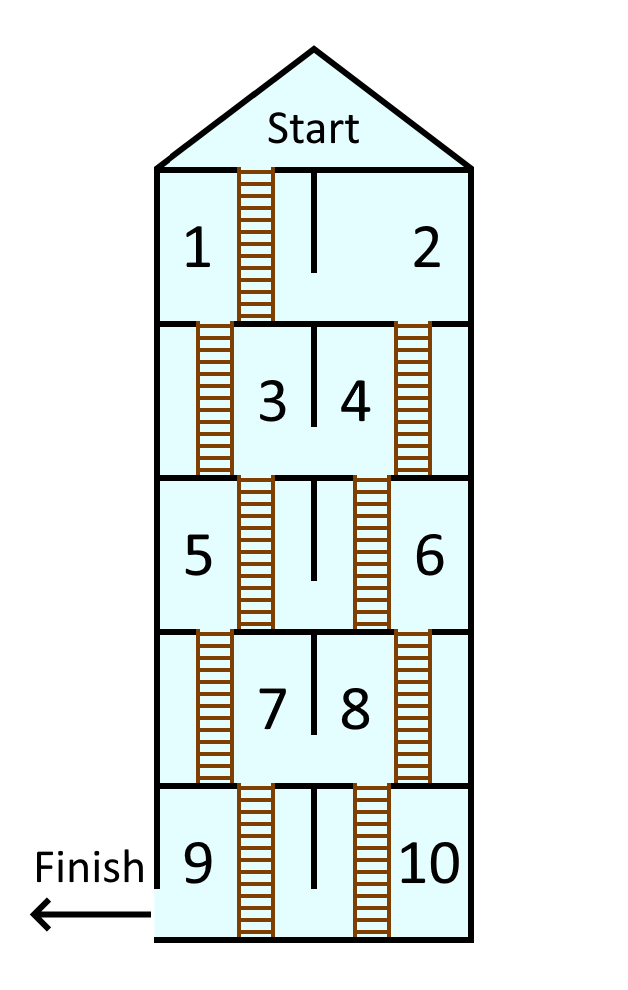Copyright © University of Cambridge. All rights reserved.
'The Tall Tower' printed from https://nrich.maths.org/
Show menu
Why do this problem?
This problem allows children to practise addition and subtraction, and compare numbers, in an interesting and challenging context. It also provides an opportunity to encourage learners to reason mathematically as they justify their solutions.
By offering three different ways into the problem, you can capture pupils' curiosity. By focusing on different approaches to a task, learners' attention is on the mathematical journey rather than just the answer.
Possible approach
Show the image of the tall tower for the whole group to see and tell the 'story'. To ensure that everyone has understood the constraints of the task, take some time to draw a few routes on the board and to find the total number of spells collected in each case. It would be useful to draw at least one route which is forbidden by the 'rules' so as to provide an opportunity for
clarification.
Set pairs off on finding the route which collects the most spells (a sheet of towers might be useful for recording) but, if possible, do not give them time to find the solution. Instead, offer the three starting points from the problem, characterised by Krishan's, Hiromi's and Fay's methods, and
ask learners to try to understand them. You may wish to give children the printable sheet from the top of the problem page, which contains all of this information.
After a suitable length of time, bring everyone together again to facilitate a discussion about possible ways of starting this problem. Did any pair use one of the approaches on the sheet? What do they like about each one? What are they less keen on? Why?
Give time for pairs to continue to work on the problem, but invite them to choose one of the approaches they have heard about, if they so wish. In the plenary, you could ask a couple of pairs to explain why they changed their approach, or not, and/or you could share ways of working on the two other parts of the task.
Key questions
Possible extension
Children could find how many different ways there are to go down the tower. Is it possible to collect all the different numbers of spells between the highest and lowest? Alternatively, learners could create their own version of the task by adding numbers of their choosing to some blank images of the tower.
Possible support
If arithmetic is a barrier to tackling this task, counters could be used to represent the spells on this large picture of the tower.
